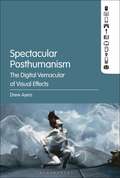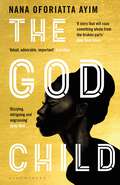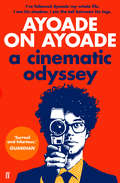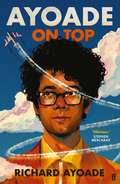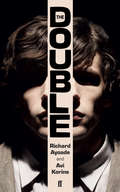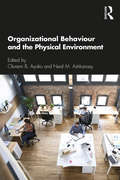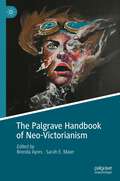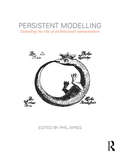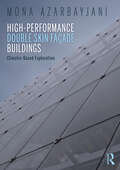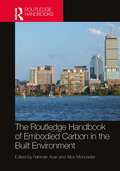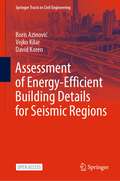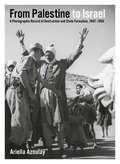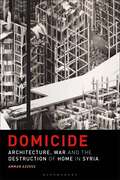- Table View
- List View
Spectacular Posthumanism: The Digital Vernacular of Visual Effects
by Drew AyersSpectacular Posthumanism examines the ways in which VFX imagery fantasizes about digital disembodiment while simultaneously reasserting the importance of the lived body. Analyzing a wide range of case studies-including the films of David Cronenberg and Stanley Kubrick, image technologies such as performance capture and crowd simulation, Game of Thrones, Terminator: Genisys, Planet Earth, and 300-Ayers builds on Miriam Hansen's concept of “vernacular modernism” to argue that the “vernacular posthumanism” of these media objects has a phenomenological impact on viewers. As classical Hollywood cinema initiated viewers into the experience of modernism, so too does the VFX image initiate viewers into digital, posthuman modes of thinking and being. Ayers's innovative close-reading of popular, mass-market media objects reveals the complex ways that these popular media struggle to make sense of humanity's place within the contemporary world. Spectacular Posthumanism argues that special and visual effects images produce a digital, posthuman vernacular, one which generates competing fantasies about the utopian and dystopian potential of a nonhuman future. As humanity grapples with such heady issues as catastrophic climate change, threats of anonymous cyber warfare, an increasing reliance on autonomous computing systems, genetic manipulation of both humans and nonhumans, and the promise of technologically enhanced bodies, the anxieties related to these issues register in popular culture. Through the process of compositing humans and nonhumans into a seemingly seamless whole, digital images visualize a utopian fantasy in which flesh and information might easily coexist and cohabitate with each other. These images, however, also exhibit the dystopic anxieties that develop around this fantasy. Relevant to our contemporary moment, Spectacular Posthumanism both diagnoses and offers a critique of this fantasy, arguing that this posthuman imagination overlooks the importance of embodiment and lived experience.
The God Child
by Nana Oforiatta Ayim'Meditative, gestural, philosophic: a brave reinvention of the immigrant narrative ... Unprecedented' Taiye Selasi'I read this novel very slowly. I didn't want to miss anything ... It is a rich, beautiful book and when I got to the end, I wanted to start again' Chibundu OnuzoMaya grows up in Germany knowing that her parents are different: from one another, and from the rest of the world. Her reserved, studious father is distant; and her beautiful, volatile mother is a whirlwind, with a penchant for lavish shopping sprees and a mesmerising power for spinning stories of the family's former glory – of what was had, and what was lost. And then Kojo arrives one Christmas, like an annunciation: Maya's cousin, and her mother's godson. Kojo has a way with words – a way of talking about Ghana, and empire, and what happens when a country's treasures are spirited away by colonialists. For the first time, Maya has someone who can help her understand why exile has made her parents the way they are. But then Maya and Kojo are separated, shuttled off to school in England, where they come face to face with the maddening rituals of Empire. Returning to Ghana as a young woman, Maya is reunited with her powerful but increasingly troubled cousin. Her homecoming will set off an exorcism of their family and country's strangest, darkest demons. It is in this destruction's wake that Maya realises her own purpose: to tell the story of her mother, her cousin, their land and their loss, on her own terms, in her own voice.
Interactive Storytelling: Third Joint Conference on Interactive Digital Storytelling, ICIDS 2010, Edinburgh, UK, November 1-3, 2010, Proceedings (Lecture Notes in Computer Science #6432)
by Ruth Aylett Mei Yii Lim Sandy Louchart Paolo Petta Mark RiedlMulti Modality State-of-the-Art Medical Image Segmentation and Registration Methodologies: Volume II
by Ayman S. El-Baz Rajendra Acharya U Andrew F. Laine Jasjit S. SuriWith the advances in image guided surgery for cancer treatment, the role of image segmentation and registration has become very critical. The central engine of any image guided surgery product is its ability to quantify the organ or segment the organ whether it is a magnetic resonance imaging (MRI) and computed tomography (CT), X-ray, PET, SPECT, Ultrasound, and Molecular imaging modality. Sophisticated segmentation algorithms can help the physicians delineate better the anatomical structures present in the input images, enhance the accuracy of medical diagnosis and facilitate the best treatment planning system designs. The focus of this book in towards the state of the art techniques in the area of image segmentation and registration.
Multi Modality State-of-the-Art Medical Image Segmentation and Registration Methodologies: Volume 1
by Ayman S. S. El-Baz, Rajendra Rajendra Acharya U, Majid Mirmehdi and Jasjit S. S. SuriWith the advances in image guided surgery for cancer treatment, the role of image segmentation and registration has become very critical. The central engine of any image guided surgery product is its ability to quantify the organ or segment the organ whether it is a magnetic resonance imaging (MRI) and computed tomography (CT), X-ray, PET, SPECT, Ultrasound, and Molecular imaging modality. Sophisticated segmentation algorithms can help the physicians delineate better the anatomical structures present in the input images, enhance the accuracy of medical diagnosis and facilitate the best treatment planning system designs. The focus of this book in towards the state of the art techniques in the area of image segmentation and registration.
Ayoade on Ayoade: A Cinematic Odyssey
by Richard AyoadeIn this book Richard Ayoade - actor, writer, director, and amateur dentist - reflects on his cinematic legacy as only he can: in conversation with himself. Over ten brilliantly insightful and often erotic interviews, Ayoade examines himself fully and without mercy, leading a breathless investigation into this once-in-a-generation visionary. Only Ayoade can appreciate Ayoade's unique methodology. Only Ayoade can recognise Ayoade's talent. Only Ayoade can withstand Ayoade's peculiar scent. Only Ayoade can truly get inside Ayoade. They have called their book Ayoade on Ayoade: A Cinematic Odyssey. Take the journey, and your life will never be the same again. Ayoade on Ayoade captures the director in his own words: pompous, vain, angry and very, very funny.
Ayoade on Top
by Richard AyoadeRichard Ayoade - in this foren, perhaps one of the most 'insubstantial' people of our age, takes us on a journey from Peckham to Paris by way of Nevada and other places we don't care about. It's a journey deep within, in a way that's respectful and non-invasive; a journey for which we will all pay a heavy price, even if you've waited for the smaller paperback edition.Ayoade argues for the canonisation of this brutal masterpiece, a film that celebrates capitalism in all its victimless glory; one we might imagine Donald Trump himself half-watching on his private jet's gold-plated flat screen while his other puffy eye scans the cabin for fresh, young prey."
The Grip of Film
by Richard AyoadeGordy LaSure's passionate about film. He eats film, he drinks film, and sometimes he'll even watch a film. But most of all he loves talking to people about film: whether a comely student with low confidence and a father complex, a Studio 'development' exec who doesn't trust his own judgement, or the countless people Gordy LaSure's encountered in his capacity as the web moderator on an Excessive Sweating Discussion Forum. Gordy LaSure's alwaystalking about films and how they'd be a shit ton better if only people would pull their asses out of their ears and listen to Gordy LaSure.The voyage of this book can be categorised as an attempt to understand How In Hell Film Works. Why are some films bad, and some films terrible?How come just a handful of films (Titanic, Porky's, Dirty Harry) areany good at all? Gordy'll tell you How and Why, and he'll give you a slug of Wherefore on the side. And he doesn't shoot from the hip; he shoots from the gut.
The Double
by Richard Ayoade Avi KorineInspired by Dostoyevsky's short story, The Double tells the story of Simon, a timid man, scratching out an isolated existence in an indifferent world. He is overlooked at work, scorned by his mother, and ignored by the woman of his dreams. He feels powerless to change any of these things. The arrival of a new co-worker, James, serves to upset the balance. James is both Simon's exact physical double and his opposite - confident, charismatic and good with women. To Simon's horror, James slowly starts taking over his life.
Organizational Behaviour and the Physical Environment
by Oluremi B. Ayoko Neal M. AshkanasyThis book looks at how the physical environment of work shapes organizational behaviour, demonstrating that our physical surroundings at work can have a big influence on employee productivity, performance and wellbeing. Drawing upon the latest research, Organizational Behaviour and the Physical Environment provides comprehensive coverage of the different aspects of the physical environment at work – the buildings, furnishings, equipment, lighting, air quality and their configurations. From theories of psychological ownership and work design, to cultural issues and technology in the workplace, its international range of contributors provide voices from Australasia, North America, Europe and the Middle East. This book will be invaluable supplementary reading for advanced students, researchers and practitioners across the fields of organizational behaviour, HRM, organizational and environmental psychology, and workspace design.
Organizational Behaviour and the Physical Environment
by Oluremi B. Ayoko Neal M. AshkanasyThis book looks at how the physical environment of work shapes organizational behaviour, demonstrating that our physical surroundings at work can have a big influence on employee productivity, performance and wellbeing. Drawing upon the latest research, Organizational Behaviour and the Physical Environment provides comprehensive coverage of the different aspects of the physical environment at work – the buildings, furnishings, equipment, lighting, air quality and their configurations. From theories of psychological ownership and work design, to cultural issues and technology in the workplace, its international range of contributors provide voices from Australasia, North America, Europe and the Middle East. This book will be invaluable supplementary reading for advanced students, researchers and practitioners across the fields of organizational behaviour, HRM, organizational and environmental psychology, and workspace design.
The Palgrave Handbook of Neo-Victorianism
by Brenda Ayres Sarah E. MaierThis handbook offers analysis of diverse genres and media of neo-Victorianism, including film and television adaptations of Victorian texts, authors’ life stories, graphic novels, and contemporary fiction set in the nineteenth century. Contextualized by Sarah E Maier and Brenda Ayres in a comprehensive introduction, the collection describes current trends in neo-Victorian scholarship of novels, film, theatre, crime, empire/postcolonialism, Gothic, materiality, religion and science, amongst others. A variety of scholars from around the world contribute to this volume by applying an assortment of theoretical approaches and interdisciplinary focus in their critique of a wide range of narratives—from early neo-Victorian texts such as A. S. Byatt’s Possession (1963) and Jean Rhys’ Wide Sargasso Sea (1966) to recent steampunk, from musical theatre to slumming, and from The Alienist to queerness—in their investigation of how this fiction reconstructs the past, informed by and reinforming the present.
Persistent Modelling: Extending the Role of Architectural Representation
by Phil AyresWith contributions from some of the world’s most advanced thinkers on this subject, this book is essential reading for anyone looking at new ways of thinking about the digital within architecture. It speculates upon implications of Persistent Modelling for architectural practice, reconsidering the relationship between architectural representation and architectural artefact particularly in the fields of responsive and adaptive architectures.
Persistent Modelling: Extending the Role of Architectural Representation
by Phil AyresWith contributions from some of the world’s most advanced thinkers on this subject, this book is essential reading for anyone looking at new ways of thinking about the digital within architecture. It speculates upon implications of Persistent Modelling for architectural practice, reconsidering the relationship between architectural representation and architectural artefact particularly in the fields of responsive and adaptive architectures.
Musical Resilience: Performing Patronage in the Indian Thar Desert (Music / Culture)
by Shalini R. AyyagariIn Musical Resilience, Shalini Ayyagari shows how professional low-caste musicians from the Thar Desert borderland of Rajasthan, India have skillfully reinvented their cultural and economic value in postcolonial India. Before India's independence in 1947, the Manganiyar community of hereditary musicians were tied to traditional patrons over centuries and through hereditary ties. In postcolonial India, traditional patronage relations faded due to new political conditions, technological shifts, and cultural change. Ayyagari uses resilience, one of the most poignant keywords of our times, to understand how Manganiyar musicians sustain and enliven their cultural significance after the fading of traditional patronage.
Visual Perception for Manipulation and Imitation in Humanoid Robots (Cognitive Systems Monographs #4)
by Pedram AzadHigh-Performance Double Skin Façade Buildings: Climatic-Based Exploration
by Mona AzarbayjaniThis book provides a comprehensive theoretical platform for the use and construction of double skin façade projects. The DSF concept has been used mostly in European buildings; however, its success in other climates should be addressed. Increasing numbers of buildings are featuring double skin façade technology in the US; however, still relatively few have been studied for their performance in operation.This book gives architects a practical guide to analyze and evaluate the actual performance of double skin façade buildings in different climatic contexts. It is important for high-performance buildings to have tools to evaluate a design’s predicted performance to achieve specific sustainable goals. To determine that the application of DSF in different climates will provide better thermal comfort, building simulation tools analyze various thermal comfort parameters through studies of the façade and compare them with the actual building’s performance data. The book takes the reader on an on-site tour of eight DSF buildings around the US. Interviews with the buildings’ architects and engineers, owners, and users offer additional perspectives and insights into the construction and performance of these developments in building design.This will provide architects with a comprehensive understanding of the challenges and opportunities in integrating double skin façades into their projects.
High-Performance Double Skin Façade Buildings: Climatic-Based Exploration
by Mona AzarbayjaniThis book provides a comprehensive theoretical platform for the use and construction of double skin façade projects. The DSF concept has been used mostly in European buildings; however, its success in other climates should be addressed. Increasing numbers of buildings are featuring double skin façade technology in the US; however, still relatively few have been studied for their performance in operation.This book gives architects a practical guide to analyze and evaluate the actual performance of double skin façade buildings in different climatic contexts. It is important for high-performance buildings to have tools to evaluate a design’s predicted performance to achieve specific sustainable goals. To determine that the application of DSF in different climates will provide better thermal comfort, building simulation tools analyze various thermal comfort parameters through studies of the façade and compare them with the actual building’s performance data. The book takes the reader on an on-site tour of eight DSF buildings around the US. Interviews with the buildings’ architects and engineers, owners, and users offer additional perspectives and insights into the construction and performance of these developments in building design.This will provide architects with a comprehensive understanding of the challenges and opportunities in integrating double skin façades into their projects.
The Routledge Handbook of Embodied Carbon in the Built Environment
by Rahman Azari Alice MoncasterThis handbook explores the critically important topic of embodied carbon, providing advanced insights that focus on measuring and reducing embodied carbon from across the built environment, including buildings, urban areas and cities, and construction materials and components. Split into five distinct sections, international experts, researchers, and professionals present the recent developments in the field of embodied carbon from various perspectives and at different scales of material, building, and city. Following an introduction to the embodied carbon question, the chapters in Section 1 then cover the key debates around issues such as the politics of embodied carbon, links between embodied carbon and thermal mass, and the misuse of carbon offsets. Section 2 reviews the embodied carbon policies in a selected number of countries. Sections 3, 4, and 5 approach the topic of embodied carbon from urban-, building-, and material-scale perspectives, respectively, and use case studies to demonstrate estimation techniques and present opportunities and challenges in embodied carbon mitigation. This will be important reading for upper-level students and researchers in Architecture, Urban Planning, Engineering, and Construction disciplines. Presenting case studies of embodied carbon assessment, this book will also help practicing architects, engineers, and urban planners understand embodied carbon estimation techniques and different mitigation strategies.
The Multi-Protagonist Film (New Approaches to Film Genre #19)
by María del AzconaThe Multi-Protagonist Film is an insightful and provocative introduction to this important new genre. Explores the origins and history of one of the most exciting new developments in contemporary film worldwide Guides readers through the genre’s central characteristics and conventions, as well as it's evolution and cultural relevance Provides a theoretical framework that is developed through the analysis several films, including Grand Hotel, Singles, American Pie, Short Cuts, and Syriana. Reveals the duality of the genre's contemporary preoccupations: the impact of globalization on human lives versus the current state of intimate affairs, the crisis of marriage, and the proliferation of sexual choices
The Multi-Protagonist Film (New Approaches to Film Genre #16)
by María del AzconaThe Multi-Protagonist Film is an insightful and provocative introduction to this important new genre. Explores the origins and history of one of the most exciting new developments in contemporary film worldwide Guides readers through the genre’s central characteristics and conventions, as well as it's evolution and cultural relevance Provides a theoretical framework that is developed through the analysis several films, including Grand Hotel, Singles, American Pie, Short Cuts, and Syriana. Reveals the duality of the genre's contemporary preoccupations: the impact of globalization on human lives versus the current state of intimate affairs, the crisis of marriage, and the proliferation of sexual choices
Assessment of Energy-Efficient Building Details for Seismic Regions (Springer Tracts in Civil Engineering)
by Boris Azinović Vojko Kilar David KorenThis open access book presents a methodology for the assessment of structural building details, taking into account the contemporary guidelines for earthquake-resistant and energy-efficient buildings. A review of structural details for energy-efficient buildings revealed that in some cases the structural system is interrupted, leading to solutions which are not suitable for earthquake-prone regions. Such typical examples would be the use of thermal insulation under the building foundation and reduction of the load-bearing elements’ dimensions – also at the potential locations of plastic hinges which are crucial for the dissipation of seismic energy. The proposed methodology of assessment favours a collaboration of architects, engineers, contractors and investors in the early stage of building design. By this the methodology enables efficient decision-making and contributes to a selection of optimal building structural details.The book starts by presenting the typical structural details of the thermal envelope of energy-efficient buildings together with the scientific background required for understanding the process of detail development from all the relevant aspects. Over 20 examples of most frequent details are described and analysed to raise awareness of the importance of earthquake resistance, sustainability, energy-efficiency and thermal comfort for users.
The Civil Contract of Photography
by Ariella AzoulayIn this groundbreaking work, Ariella Azoulay thoroughly revises our understanding of the ethical status of photography. It must, she insists, be understood in its inseparability from the many catastrophes of recent history. She argues that photography is a particular set of relations between individuals and the powers that govern them and, at the same time, a form of relations among equals that constrains that power. Anyone, even a stateless person, who addresses others through photographs or occupies the position of a photograph’s addressee, is or can become a member of the citizenry of photography.The crucial arguments of the book concern two groups that have been rendered invisible by their state of exception: the Palestinian noncitizens of Israel and women in Western societies. Azoulay’s leading question is: Under what legal, political, or cultural conditions does it become possible to see and show disaster that befalls those with flawed citizenship in a state of exception? The Civil Contract of Photography is an essential work for anyone seeking to understand the disasters of recent history and the consequences of how they and their victims are represented.
From Palestine to Israel: A Photographic Record of Destruction and State Formation, 1947-1950
by Ariella AzoulayIn this carefully curated and beautifully presented photobook, Ariella Azoulay offers a new perspective on four crucial years in the history of Palestine/Israel.*BR**BR*The book reconstructs the processes by which the Palestinian majority in Mandatory Palestine became a minority in Israel, while the Jewish minority established a new political entity in which it became a majority ruling a minority Palestinian population. By reading over 200 photographs from that period, most of which were previously confined to Israeli state archives, Azoulay recounts the events and the stories that for years have been ignored or only partially acknowledged in Israel and the West.*BR**BR*Including substantial analytical text, this book will give activists, scholars and journalists a new perspective on the origins of the Palestine-Israel conflict.
Domicide: Architecture, War and the Destruction of Home in Syria
by Dr Ammar AzzouzThe city of Homs, like so many places in Syria, has suffered mass destruction since the war began in 2011. So far, the architectural response to the crisis has focused on 'cultural heritage', ancient architecture, and the external displacement of refugees, often neglecting the everyday lives of Syrians and the buildings that make up their homes and communities. In Domicide, Ammar Azzouz uses the notion of the 'home' to address the destruction in cities like Homs, the displacement of Syrian people both externally and internally, and to explore how cities can be rebuilt without causing further damage to the communities that live there.Drawing on interviews with those working in the built environment professions, both inside and outside of Syria, but also Syrians from other backgrounds who have become 'architects' in their own way as they were forced to repair and rebuild their homes by themselves, Domicide offers fresh insight into the role of the architect during time of war, and explores how the future reconstruction of cities should mirror the wants and needs, the traditions and ways of living, of local communities. Focusing on Homs but offering a blueprint for other urban areas of conflict across Syria and the wider world, the book is essential reading for researchers in architecture, urban planning, heritage studies and conflict studies.
